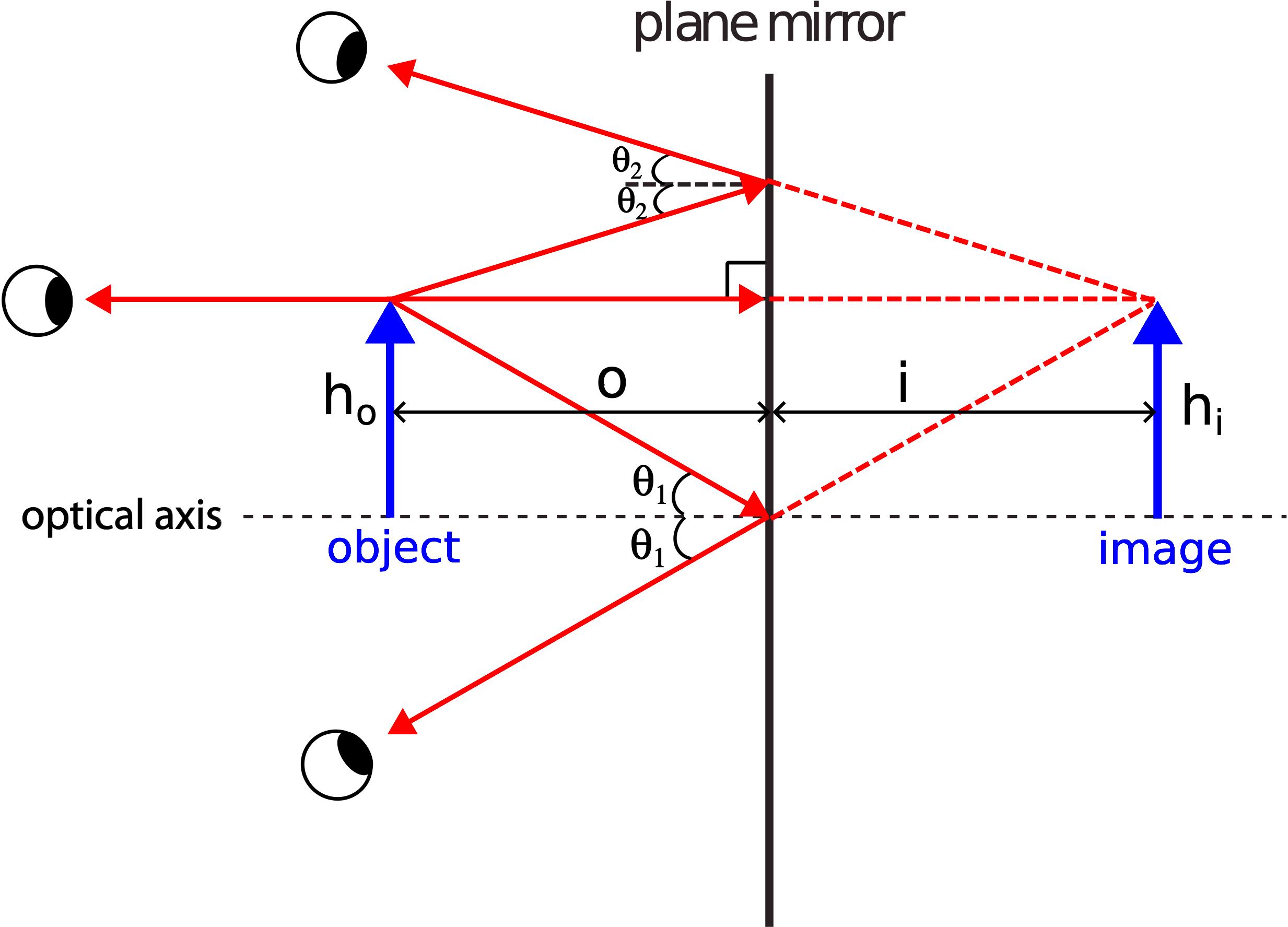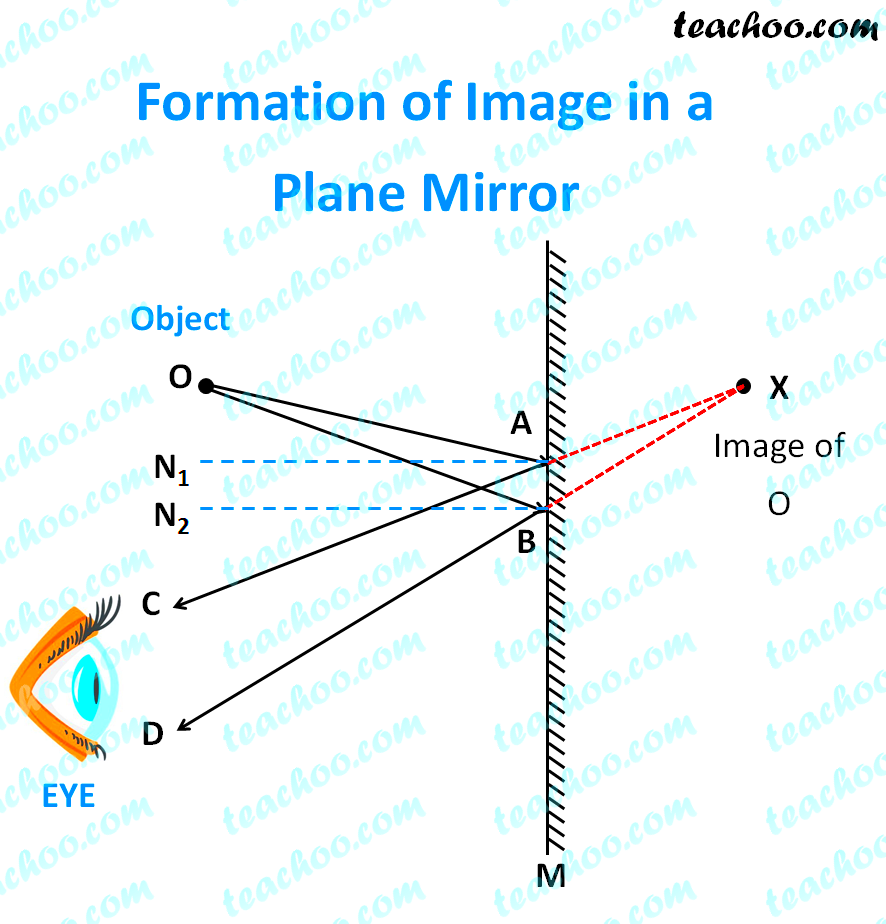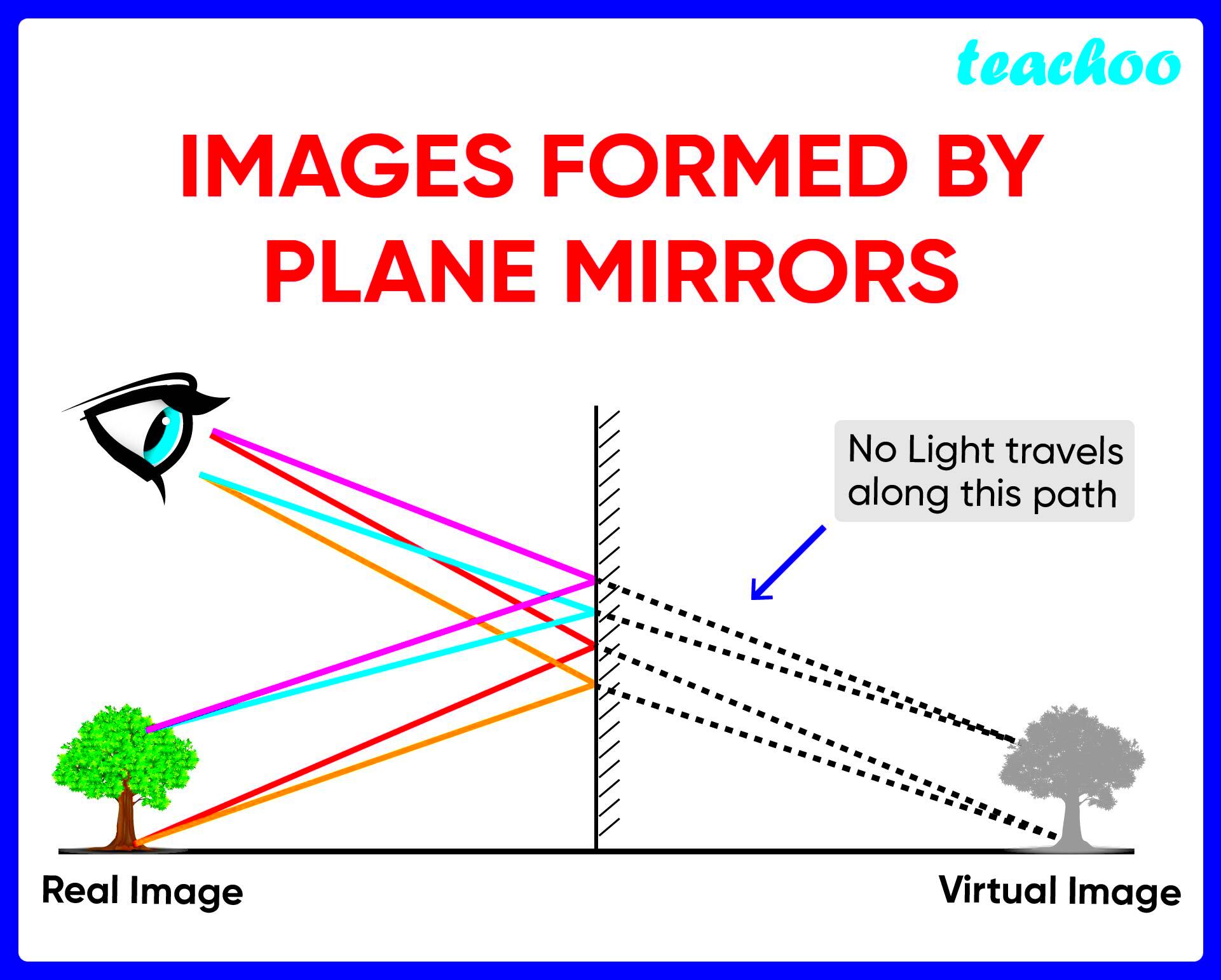When we look into a mirror, we see an image of ourselves. But have you ever wondered how that image is formed? The process involves the principles of light reflection and the properties of the mirror. A plane mirror, which is a flat, smooth surface, creates images by reflecting light rays in a predictable manner. Understanding how this works can help you grasp the fundamentals of optics, which is essential in many areas of science and everyday life.
In simple terms, an image is formed in a plane mirror when light rays from an object hit the mirror, bounce off, and then appear to come from a different location. This allows us to see a reflection that looks like the object, though it's not actually there in physical space. The image is virtual, meaning the light rays don’t actually meet but seem to originate from behind the mirror.
The Role of Reflection in Image Formation

Reflection is the process that allows us to see ourselves and objects in a mirror. It occurs when light hits a surface and bounces back instead of passing through. In the case of a plane mirror, the light rays hit the smooth, flat surface and are reflected at an angle equal to the angle at which they arrived. This is known as the law of reflection, which states:
- The angle of incidence (the angle between the incoming light ray and the normal) is equal to the angle of reflection (the angle between the reflected light ray and the normal).
When light rays reflect off the plane mirror, they seem to come from behind the mirror, forming a virtual image. These rays don't actually converge behind the mirror; instead, our brain processes them as if they are coming from a point behind the mirror. The key thing to note is that the image is as far behind the mirror as the object is in front of it, and it has the same size as the object.
How Light Rays Behave in a Plane Mirror

When light rays strike a plane mirror, they don't just reflect randomly. The way they behave is governed by specific rules. Let’s break it down: when a beam of light approaches the mirror, it first hits the surface at an angle. The angle at which it strikes is called the angle of incidence. The light then bounces off the mirror’s surface, but it doesn’t just go anywhere—it follows the law of reflection.
For each light ray, the angle at which it strikes the mirror is exactly equal to the angle at which it reflects off. This predictable behavior helps form a clear, consistent image. To visualize this better, here’s a simple breakdown:
| Term | Definition |
|---|---|
| Angle of Incidence | The angle between the incoming light ray and the normal (an imaginary line perpendicular to the mirror's surface). |
| Angle of Reflection | The angle between the reflected light ray and the normal. |
Once the light rays hit the mirror, they reflect back to our eyes. These rays appear to originate from a point behind the mirror, even though they don’t actually converge there. The final image we see is a virtual image, meaning it can’t be projected onto a screen because the rays don’t physically meet behind the mirror.
The Characteristics of an Image in a Plane Mirror
When you look into a plane mirror, there are specific characteristics that define the image you see. A plane mirror forms an image that is a reflection of the object in front of it, but it comes with unique traits. Let’s break these down:
- Upright Orientation: The image in a plane mirror is always upright, meaning it has the same orientation as the object. If you stand upright in front of a mirror, your reflection will also be upright.
- Same Size: The image formed in a plane mirror is the same size as the object. There’s no distortion, unlike other types of mirrors that may make things look bigger or smaller.
- Virtual Image: The image formed is virtual, meaning the light rays don’t physically meet behind the mirror. It only appears to be there, and you can’t project it onto a screen.
- Equal Distance: The image appears to be the same distance behind the mirror as the object is in front of it. If the object is 3 feet away from the mirror, the image will appear to be 3 feet behind the mirror.
These characteristics make plane mirrors simple yet fascinating to understand. Whether it’s in your bathroom or in a car’s side-view mirror, these traits stay consistent. It’s always a perfect replica of what’s in front of the mirror—just reversed left to right!
Virtual Images in Plane Mirrors
A key feature of plane mirrors is that they always form virtual images. So, what exactly does this mean? In optics, a virtual image is one that cannot be captured on a screen because the light rays that form the image don’t actually meet. Instead, they appear to originate from a point behind the mirror, creating the illusion of an image at that spot. Let’s explore why this happens:
- Light Ray Behavior: The light rays that bounce off a plane mirror do so in such a way that they seem to come from a point behind the mirror. However, in reality, these rays never converge at that point. Our brain interprets them as if they do.
- Why Virtual? Unlike real images, which are formed where light rays converge, virtual images are formed when the reflected light rays diverge. They only appear to meet at a point behind the mirror.
- Common Examples: The reflection you see in your bathroom mirror or a car mirror is a virtual image. You can’t physically capture it with a camera or on a screen.
Despite being virtual, these images are incredibly useful in everyday life. They provide an accurate reflection, making plane mirrors perfect for personal grooming, driving, and even in optical instruments like telescopes and periscopes.
Types of Images in Mirrors
Mirrors come in different shapes, and the type of image they produce depends on their surface. There are primarily two types of mirrors: plane mirrors and curved mirrors (concave and convex). While we’ve been focusing on plane mirrors, let’s take a quick look at the differences between the images formed by these various mirrors:
| Mirror Type | Image Type | Characteristics |
|---|---|---|
| Plane Mirror | Virtual Image | Upright, same size, same distance from the mirror as the object |
| Concave Mirror | Real or Virtual Image | Can form both real or virtual images depending on the object’s distance from the mirror; real images are inverted, virtual images are upright |
| Convex Mirror | Virtual Image | Always virtual, upright, smaller in size, and closer to the mirror |
In a concave mirror, the image formed can either be real or virtual. Real images are inverted, while virtual images appear upright, depending on where the object is placed. Convex mirrors, on the other hand, always form virtual, upright, and reduced-size images, making them great for wide-angle views, like in security mirrors or vehicle side mirrors.
So, whether you’re looking at your reflection in a plane mirror or seeing the world through a curved mirror, the type of image you see depends on the kind of mirror and the positioning of the object. Understanding these differences helps in various applications, from personal use to more technical optics and imaging systems.
Common Applications of Plane Mirrors
Plane mirrors are some of the most commonly used optical devices in everyday life. Their simple design makes them versatile, and they serve a variety of practical purposes. Whether you realize it or not, plane mirrors are all around you, helping with everything from grooming to safety. Let’s look at a few of the common applications of plane mirrors:
- Personal Grooming: The most obvious use of plane mirrors is in bathrooms, where they help us check our appearance. Mirrors allow us to see our reflection clearly for activities like shaving, applying makeup, or brushing our hair.
- Vehicles: Side mirrors in cars and rearview mirrors are plane mirrors that help drivers see behind and to the sides of their vehicles. They provide safety by allowing drivers to navigate and change lanes more easily.
- Optical Instruments: Plane mirrors are used in instruments like telescopes and periscopes. In telescopes, they help redirect light to provide clearer images of distant objects, while in periscopes, they enable viewing over obstacles, such as in submarines or trench warfare.
- Interior Design: Mirrors are often used in home decor to create the illusion of more space, especially in smaller rooms. They can also enhance lighting and add aesthetic value to a room.
In addition to these everyday uses, plane mirrors are also employed in scientific equipment, lasers, and even some surveillance systems. Their ability to form clear, accurate, and undistorted reflections makes them an essential tool in both personal and professional settings.
Conclusion: Key Takeaways on Image Formation in Plane Mirrors
Understanding how images are formed in plane mirrors helps us appreciate the importance of reflection in both everyday life and scientific applications. Here are the key takeaways from this discussion:
- Virtual Images: Plane mirrors form virtual images, which means the light rays appear to come from a point behind the mirror but do not actually converge there.
- Characteristics of the Image: The image formed is upright, of the same size as the object, and located at the same distance behind the mirror as the object is in front of it.
- Reflection: The law of reflection ensures that light rays reflect off a plane mirror in a predictable manner, forming clear, accurate images.
- Applications: Plane mirrors have many uses, from personal grooming to scientific research, safety, and interior design, making them a vital part of daily life.
In summary, plane mirrors are not just simple objects but essential tools that help us navigate the world. Whether you’re looking at your reflection in a bathroom mirror or using one in a telescope, the principles behind image formation in plane mirrors remain the same. By understanding how they work, we can better appreciate their role in both practical and theoretical applications.
FAQ
1. Why are the images in a plane mirror always the same size as the object?
The size of the image in a plane mirror is the same as the object because the reflection does not alter the scale of the light rays. The light rays are reflected back in such a way that the image appears identical in size, though it is flipped horizontally.
2. Can plane mirrors create real images?
No, plane mirrors only create virtual images. Real images are formed when light rays converge, but in a plane mirror, the rays only appear to diverge from behind the mirror.
3. What’s the difference between real and virtual images?
A real image can be projected onto a screen because the light rays actually converge at a point. A virtual image, on the other hand, can’t be projected since the light rays only appear to originate from a point behind the mirror.
4. Why do plane mirrors reverse images left to right?
While plane mirrors don’t actually flip images, our brains interpret the reflection as reversed because of the way the light rays bounce off the mirror. This creates a horizontal inversion, making it seem as if the left and right sides of the image are switched.

 admin
admin








